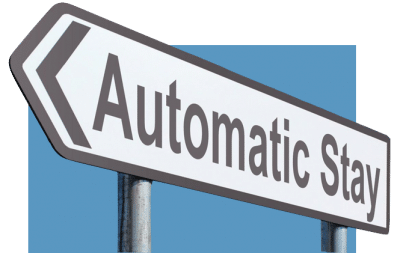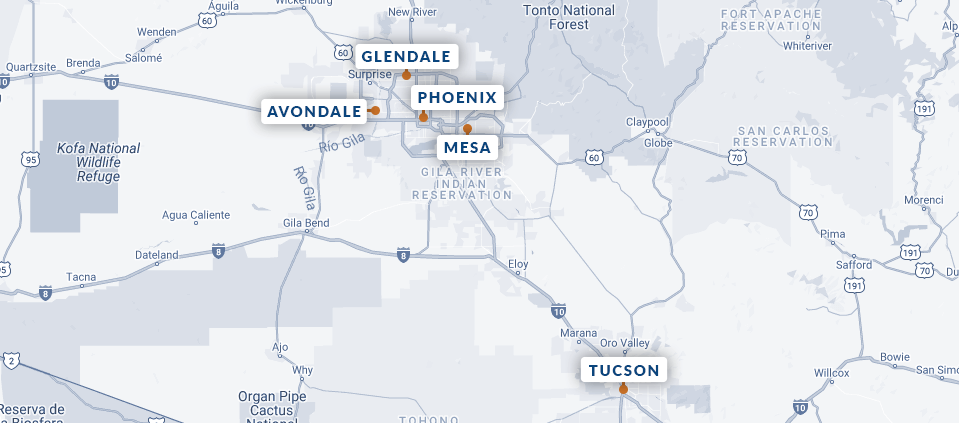
Gets Answers to all your Automatic Stay FAQs
AUTOMATIC STAY FAQs
ANSWER:
The Automatic Stay is a feature of bankruptcy that protects you from wage and bank account garnishment, foreclosure, repossession, and other legal proceedings against the debtor. Learn more Automatic Stay FAQs from Arizona’s Bankruptcy Leader.
ANSWER:
The Automatic Stay remains in effect as long as your case is active, or until it is discharged or dismissed.
ANSWER:
The Automatic Stay in Chapter 7 and Chapter 13 serve the same purpose, and the only difference is the length of time they last. Unless the case is dismissed, a Chapter 7 lasts 3-5 months while a Chapter 13 lasts 3-5 years. The stay lasts for the duration of the case. Learn more Automatic Stay FAQs from Arizona’s Best Bankruptcy Attorneys.
ANSWER:
Usually, the Automatic Stay in a Chapter 13 will last as long as the payment plan, 3-5 years. If you file a Chapter 13 and it is dismissed, and you file again within 1 year, the Automatic Stay will only last for 30 days. You will need to apply to extend the Stay with the court. If you file a third time within 1 year, you will not receive the protections of the Automatic Stay at all. You can apply to still receive the Automatic Stay, but will need to show good reason to the court of why it is necessary.
ANSWER:
Your creditors can file a Motion for Relief from the Automatic Stay to attempt to revoke the stay. The court must approve the motion for the stay is revoked.
ANSWER:
When this Motion is granted, your creditors can resume calling you, and proceed with foreclosures, repossessions, and garnishments.
ANSWER:
You will need to make a formal written statement requesting relief, including a citation from the applicable Bankruptcy Code section. All documentation regarding the request must be attached, including documentation proving that the property in question has inadequate protection or equity. The filing fee for a Motion for Relief from the Automatic Stay is $181, except for child support debts. The motion will also need to be accompanied by a Notice of Motion and Opportunity to Object. The Motion will need to be served upon the filer. The filer will have an opportunity to object, and a hearing will be held on the matter. Learn more about Automatic Stay FAQs from Arizona’s Bankruptcy Attorneys.
ANSWER:
While it will depend on the specific case and judge, judges have 30 days to set an initial hearing on a Motion for Relief from the Automatic Stay, and another 30 days to set the final hearing. The hearing can be expedited under special circumstances.
ANSWER:
If the property you owe for is worth less than the balance of the debt, your creditor may be able to successfully appeal the Automatic Stay. If you are in a Chapter 13 and the property isn’t required to be included in the reorganization, it may also qualify for revocation of the Automatic Stay. The creditor may also be successful if there isn’t adequate protection for the collateral for the debt (i.e., insurance coverage).
ANSWER:
The only way to invoke the Automatic Stay is by filing a bankruptcy petition. Most individual filers either choose Chapter 7 or Chapter 13.
ANSWER:
The Automatic Stay prevents your creditors from taking your home, car, and wages, which will create a compounding debt problem. Needing to go pay a security deposit and moving fees for a new home, putting a down payment on a new car, or simply getting by when 25% of your wages are being taken is nearly impossible for someone in an active bankruptcy. The Automatic Stay ensures that bankruptcy filers can resolve their debts in peace and come out on the other side with the potential to get their finances back on track.
ANSWER:
The Automatic Stay will stop a foreclosure temporarily, and will resume after the bankruptcy closes if the debt is not resolved during the bankruptcy. In Chapter 7, which typically lasts 3-5 months, the filer would have to catch up on their mortgage payments independently of their bankruptcy before the case is discharged to keep their home. In Chapter 13, the past-due mortgage will be included in the payment plan. If the filer successfully completes the payment plan, the foreclosure will not resume after the case is discharged.
ANSWER:
The Automatic Stay will stop garnishments on active pay periods, meaning you need to file your bankruptcy (and provide your payroll department with your case number) before payroll is run. This is typically a few days before you actually receive your paycheck. Learn more answers to Automatic Stay FAQs from your Arizona bankruptcy lawyers.
ANSWER:
Creditors are not allowed to file a lawsuit against you during your bankruptcy unless they successfully file a Motion for Relief from the Automatic Stay.
ANSWER:
Proceeding with an eviction, repossession, foreclosure, or wage or bank account garnishment in spite of the Automatic Stay is a creditor violation. Continued creditor calls are also a violation under the Automatic Stay. If your creditors proceed with any of these actions after your bankruptcy is filed, you should inform your attorney so they can file sanctions against your creditors and take any other appropriate steps.
Contact My AZ Lawyers experienced Arizona Bankruptcy law firm to schedule a free consultation with an attorney. Our legal staff can help you to understand how bankruptcy and the automatic stay can benefit your debt-relief case. Get answers to Automatic Stay FAQs. During your consultation and debt evaluation, you can get the answers, advice, and options that you need specific for your financial situation.

My AZ Lawyers Automatic Stay bankruptcy attorney
Send Us a Message
Glendale Location:
20325 N 51st Avenue, Suite #134 Building 5
Glendale, AZ 85308
Office: (602) 509-0955






